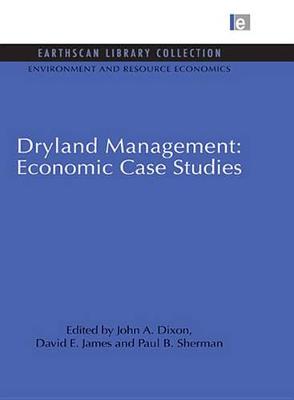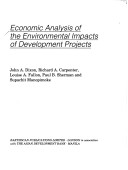Environmental and Resource Economics Set
3 total works
Economics of Dryland Management
by John A. Dixon, David E. James, and Paul B. Sherman
We have always had land in which the agricultural productivity is limited because there is not enough moisture. Systems of farming and burning often degrade dryland further until it is desert. Today, however, the problem is becoming much more serious. Over 20 per cent of the world's population lives in dryland areas, and unless action is taken drylands will increase dramatically.
This book focuses on the people who live and .farm in the drylands, their use of land resources and the economic returns from their decisions. In a clear and thorough economic appraisal, the authors show how it is still possible to arrest the problem.
Originally published in 1989
Dryland Management: Economic Case Studies
by John A. Dixon, David E. James, and Paul B. Sherman
Drylands are a sizeable part of the world's potentially arable land. They vary from the hyper-arid regions of the classic deserts of Africa and Asia to the more common semi-arid and sub-humid areas that support extensive
agricultural systems dependent on rainfall or irrigation.
Following their successful and innovative work The Economics of Dryland Management the editors have assembled twenty case studies from nine countries in the continents of Africa, Asia, North America and Australia. They help to explore more fully the costs of land degradation and illustrate the economics of reclamation, rehabilitation and prevention. The cases in this book present a rich, varied and readable survey of a wide range of drylands and their resources.
Originally published in 19990
Economic Analysis of the Environmental Impacts of Development Projects
by John A. Dixon, etc., and Et Al
It has always been thought that some level of pollution and waste is unavoidable in development projects. But no one has made much effort to quantify and assess the extent of this sort of damage.
In this book a group of analysts from the Asian Development Bank and from the East West Center propose a means of constructing useful economic evaluations of the impacts of development projects on the environments in which they are constructed. This study demands the systematic evaluation of all the intentional and unintentional consequences of development initiatives before they are determined upon. It is essential reading for development economists, analysts and bankers. Originally published in 1986


